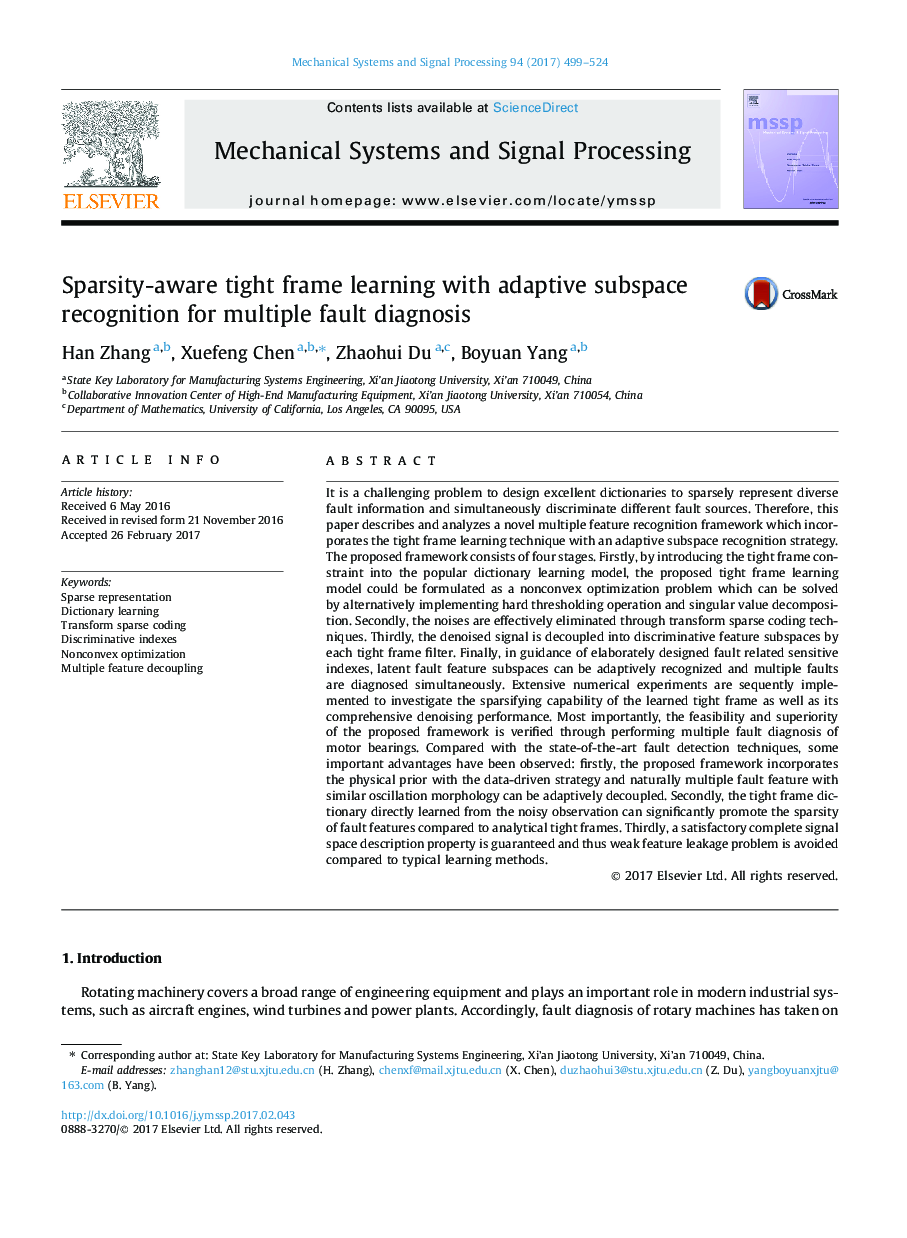| کد مقاله | کد نشریه | سال انتشار | مقاله انگلیسی | نسخه تمام متن |
|---|---|---|---|---|
| 4976954 | 1451841 | 2017 | 26 صفحه PDF | دانلود رایگان |
عنوان انگلیسی مقاله ISI
Sparsity-aware tight frame learning with adaptive subspace recognition for multiple fault diagnosis
ترجمه فارسی عنوان
یادگیری چارچوب انعطاف پذیر با انعطاف پذیری فضای قابل انطباق برای تشخیص چند گسل
دانلود مقاله + سفارش ترجمه
دانلود مقاله ISI انگلیسی
رایگان برای ایرانیان
کلمات کلیدی
نمایندگی انحصاری، یادگیری فرهنگ لغت تبدیل برنامه نویسی ضعیف شاخص های تبعیض آمیز، بهینه سازی غیرقانونی، جداسازی چندین ویژگی،
موضوعات مرتبط
مهندسی و علوم پایه
مهندسی کامپیوتر
پردازش سیگنال
چکیده انگلیسی
It is a challenging problem to design excellent dictionaries to sparsely represent diverse fault information and simultaneously discriminate different fault sources. Therefore, this paper describes and analyzes a novel multiple feature recognition framework which incorporates the tight frame learning technique with an adaptive subspace recognition strategy. The proposed framework consists of four stages. Firstly, by introducing the tight frame constraint into the popular dictionary learning model, the proposed tight frame learning model could be formulated as a nonconvex optimization problem which can be solved by alternatively implementing hard thresholding operation and singular value decomposition. Secondly, the noises are effectively eliminated through transform sparse coding techniques. Thirdly, the denoised signal is decoupled into discriminative feature subspaces by each tight frame filter. Finally, in guidance of elaborately designed fault related sensitive indexes, latent fault feature subspaces can be adaptively recognized and multiple faults are diagnosed simultaneously. Extensive numerical experiments are sequently implemented to investigate the sparsifying capability of the learned tight frame as well as its comprehensive denoising performance. Most importantly, the feasibility and superiority of the proposed framework is verified through performing multiple fault diagnosis of motor bearings. Compared with the state-of-the-art fault detection techniques, some important advantages have been observed: firstly, the proposed framework incorporates the physical prior with the data-driven strategy and naturally multiple fault feature with similar oscillation morphology can be adaptively decoupled. Secondly, the tight frame dictionary directly learned from the noisy observation can significantly promote the sparsity of fault features compared to analytical tight frames. Thirdly, a satisfactory complete signal space description property is guaranteed and thus weak feature leakage problem is avoided compared to typical learning methods.
ناشر
Database: Elsevier - ScienceDirect (ساینس دایرکت)
Journal: Mechanical Systems and Signal Processing - Volume 94, 15 September 2017, Pages 499-524
Journal: Mechanical Systems and Signal Processing - Volume 94, 15 September 2017, Pages 499-524
نویسندگان
Han Zhang, Xuefeng Chen, Zhaohui Du, Boyuan Yang,
